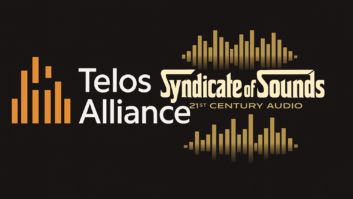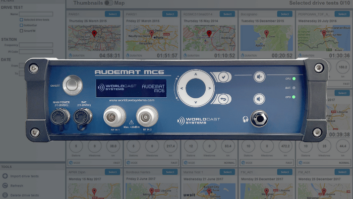For years no one knew exactly where the National Association of Broadcasters stood on the idea of sanctioning the operation of “Franken FM” stations in the United States. Now we know. NAB this week expressed support for the continuation of service for the 13 FM6 stations currently in operation.
The so-called Franken FM stations, which derive their nickname from a phrase coined by broadcast engineers to describe their unorthodox nature, are hybrid, digital, low-power TV/analog FM operations serving several major cities, including Chicago and New York.
NAB’s recent comments to the FCC outline a path forward to compatibility between so-called Franken FM stations broadcasting at 87.7 FM and traditional FM stations operating on the lower end of the reserved band. It notes that there have been no reports of interference from the FM6 stations, which operate as ancillary or supplementary services, in their more than 20 year history.
“Loyal audiences have developed around some FM6 stations during this period and NAB believes permanent authorization of those established services is warranted and would serve the public interest,” NAB told the FCC.
There are 13 FM6 stations under temporary authority from the FCC, according to the latest documentation, which operate under the condition that their audio and video programming reach similar populations.
The FCC released a Fifth Notice of Proposed Rulemaking earlier this summer with designs to finally settle the issue of what to do with FM6 stations. The agency asked if it should allow the FM6 stations to continue to operate or look for more efficient uses of the TV 6 spectrum. The FCC could simply grandfather in the 13 FM6 stations rather than continuing to renew STAs [Special Temporary Authority].
[Related: “Comment Deadlines Set in FM6 NPRM“]
NAB submits that television service must have “unconstrained primacy” in that spectrum and that any expansion of the FM6 station service must first be studied further.
“NAB is aware of no new technical studies that would support elimination or revision of the current channel 6 distance separation rules for the various classes of FM service operating on reserved band FM Channels 201-220 and believes such studies must be a prerequisite to any expansion of FM6 stations,” NAB commented to the FCC.
The broadcaster group downplays the need to repurpose the TV 6 spectrum for additional FM channels, as suggested by National Public Radio. “NAB recognizes that there may be a desire for additional FM channels in some markets, for example, to provide translator outlets for AM stations or to relieve crowding in the FM band. However, the minimal relief afforded by a limited repurposing of TV channel 6 to the FM service in areas where there are presently no channel 6 stations is unlikely to outweigh the potential costs.”
In addition, any authorization of new FM stations in an FM expanded band created from television spectrum could also preclude new television stations, NAB wrote in its comments. There are currently 98 television stations authorized to operate on Channel 6 in the U.S., according to the FCC.
NAB also believes that the requirement to transmit FM6 at 87.75 MHz is unnecessary and is linked to the now-obsolete NTSC television transmission system. Instead, NAB proposes a minor tweak to require the 13 FM6 stations to operate on 87.7 MHz in order to give licensees the opportunity to improve analog FM6 reception while maintaining ATSC-3.0 compatibility.
[Related: “Do ‘Frankens’ Really Fit Into the Radio Ecosystem?“]
NAB explains this suggestion further: “This small 50 kHz shift in frequency away from the FM band would presumably reduce the potential for interference to FM stations operating in the reserved band while improving compatibility and fidelity for FM receivers that can tune only in 200 kHz steps. Indeed, NAB notes that many or most FM6 operations apparently operate at 87.7 MHz and that the technical analysis done in support of FM6 operation in conjunction with ATSC 3.0 involved testing at 87.7 MHz.”
NAB concludes its FM6 comments by suggesting that no change in protection by FM stations of TV6 stations is required. It does, however, believe that FM6 operations on 87.7 MHz are an interference threat to FM stations on at least 88.1 and 88.3 MHz and vice-versa. “Protection requirements are needed to protect both stations in the FM band and FM6 stations on 87.7 MHz.
“As a starting point, NAB believes that the second-and third-adjacent channel protection requirements contained in Section 73.509 of the rules may be appropriate with respect to 87.7 MHz FM6 stations and FM stations operating on Channels 201 and 202 (88.1 and 88.3 MHz, respectively).”
Reply comments are due by Aug. 1. Submit comments using the FCC online comment system. Use 03-185 in the Proceeding field.







